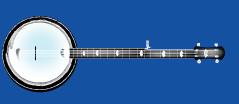| << Chapter < Page | Chapter >> Page > |
A Romanian translation of this module is available at Web Hosting Geeks .
There are two common ways to classify musical instruments. One way is to group them as they are in a Western orchestra : strings, woodwinds, brass, and percussion. This method is more widely recognized, particularly among non-musicians, and it is very useful in its traditional setting, Western classical and art music . However, it is difficult or confusing to apply to the many non-orchestral instruments.
The other way, first published in 1914 by Erich von Hornbostel and Curt Sachs, is to group instruments according to how their sounds are produced. This method can be used to classify any instrument and is now preferred by most musicologists. The Hornbostel-Sachs method is more specific, more inclusive, and more accurate:
The major categories are chordophones , aerophones , membranophones , and idiophones . Some musicologists also include a separate category for electrophones . Here is an introduction to the major groups in each of these categories. Familiar instruments in each category are mentioned when possible; some categories, while very popular around the world, will not have any specific instruments that are widely familiar.
In a chordophone , the sound is made by vibrating strings. The main groups of chordophones are classified according to the relationship between the strings and the resonator. ( Resonators pick up the original vibrations and vibrate sympathetically with them, amplifying the original sounds and altering them so that they sound more musical.) Subcategories depend on how the string is played (plucked or bowed for example), and types of resonators.



Notification Switch
Would you like to follow the 'A parent's guide to band' conversation and receive update notifications?